My room 141 decorated in Mardi Gras colors;
gold, green and purple with streetcar # 937 on wall.
The hotel desk clerk said
that there should be a cab waiting outside the front door. I
looked and none was there so the clerk said he would call one
for me. While waiting outside, I was able to watch a freight
train go by in the next block. The tank cars were so high that
maintenance from the streetcar line was there holding up the
trolley wires high as the tank cars moved slowly underneath. In
a few minutes my taxi arrived and then it was a short ride to
Union Station and Amtrak. Another reason that Maison St. Charles
is a good location for staying in New Orleans. I arrived around
8:00am for a 9:00am departure on Train 1, westbound for Los
Angeles, arriving Wednesday at 5:30am.
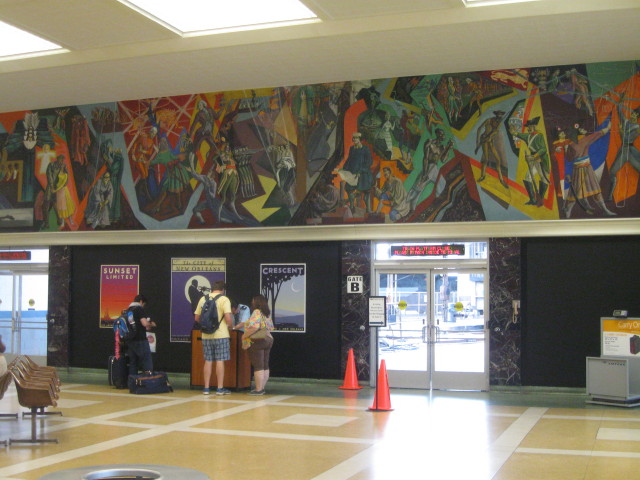
Passengers go through Gate B to the platform and the waiting
train.
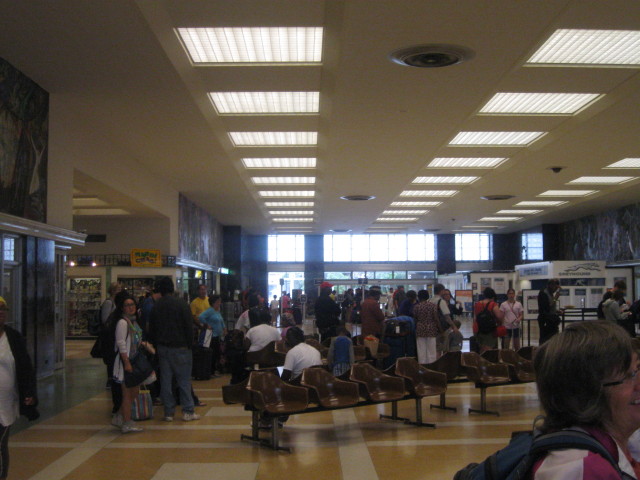
.
New Orleans waiting room the bourgeoisie. The Magnolia Room leaves
a lot to be desired and I would place it last on the ratings of
first class lounges.
Our train departed on time at 9am.
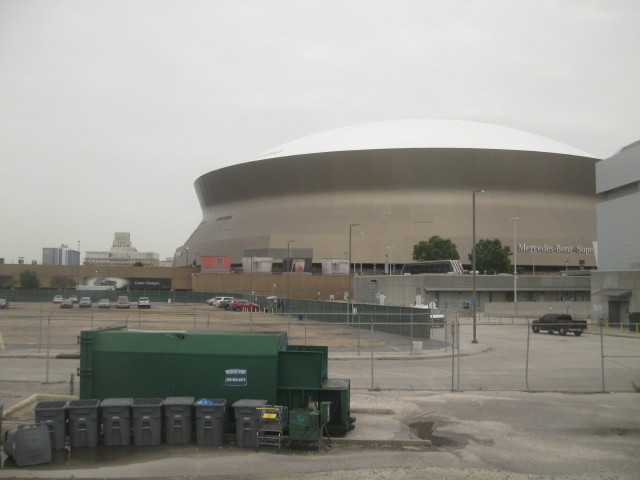
Mercedes-Benz Superdome adjacent to Union Station.
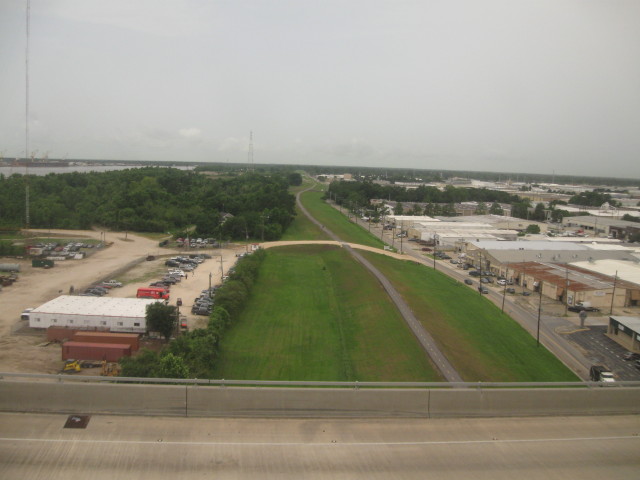
Elmwood on the east bank of the Mississippi River.
At 9:25am we are approaching
the Huey P. Long Bridge that connects Elmwood on the East Bank
with Bridge City on the West Bank of the Mississippi River. A
favorite "rail fan" location, it is at 4.4 miles, the longest
railroad bridge in the U.S., named for the popular and notorious
governor Huey P. Long. It opened in 1935 and is owned by the New
Orleans Public Belt Railroad, a non-profit terminal switching
company.
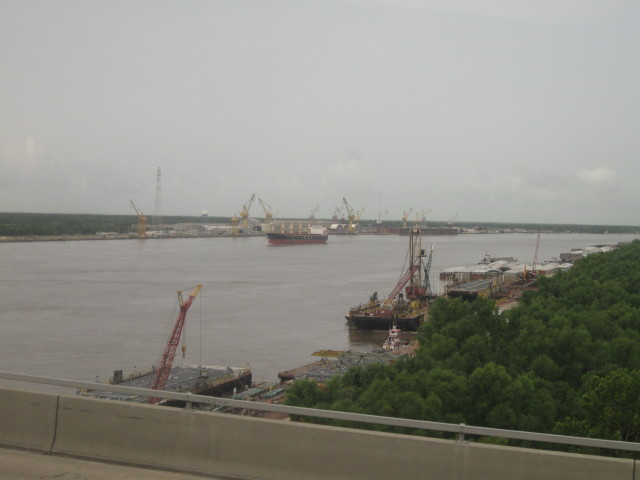
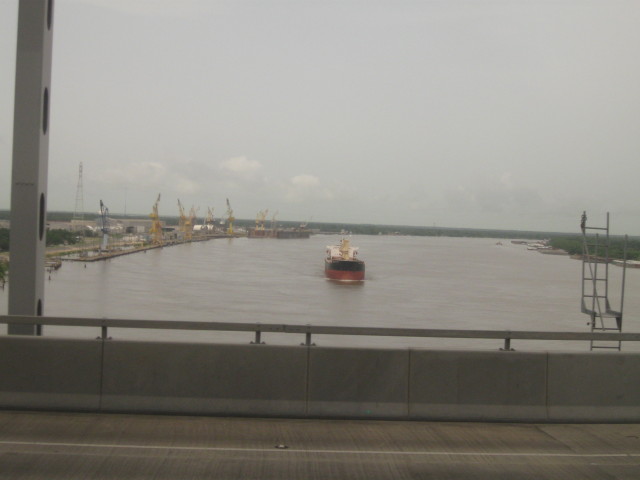
Heading out to sea.
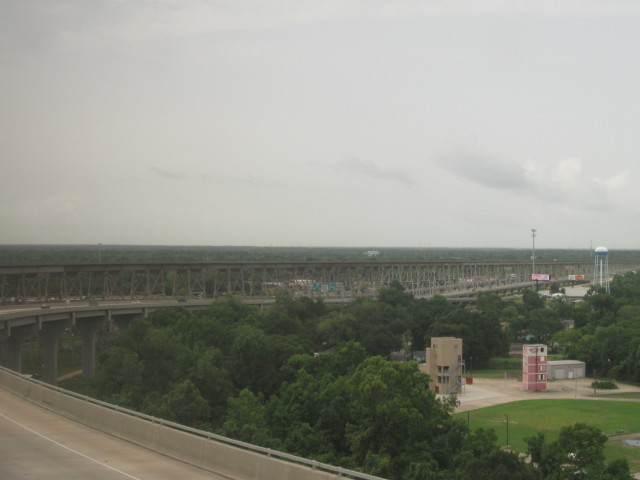
Bridge City on the west bank.
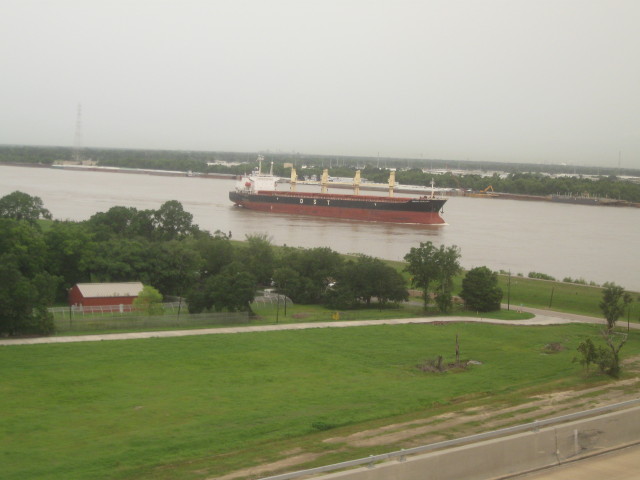
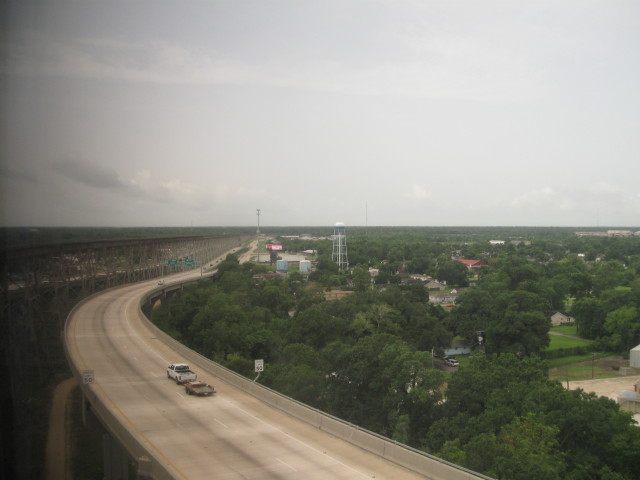
West bank approach to bridge.
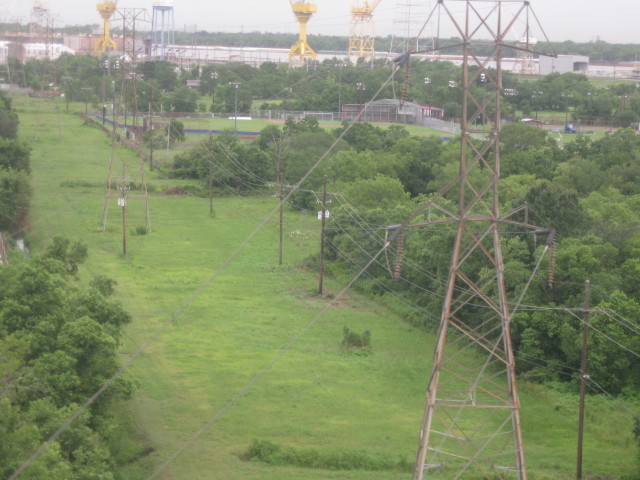
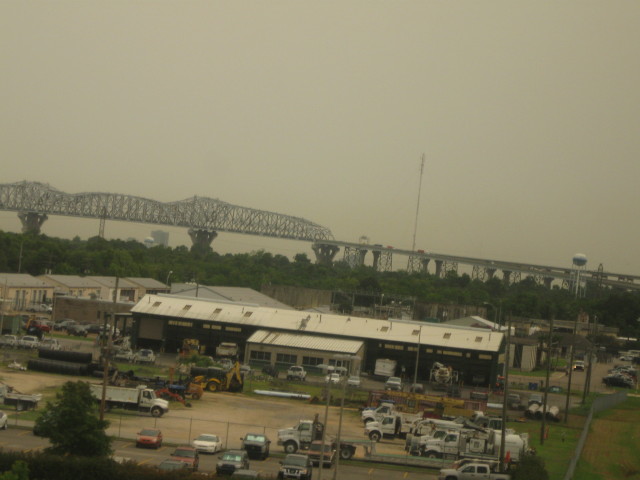
Huey P. Long Bridge seen from the west bank.
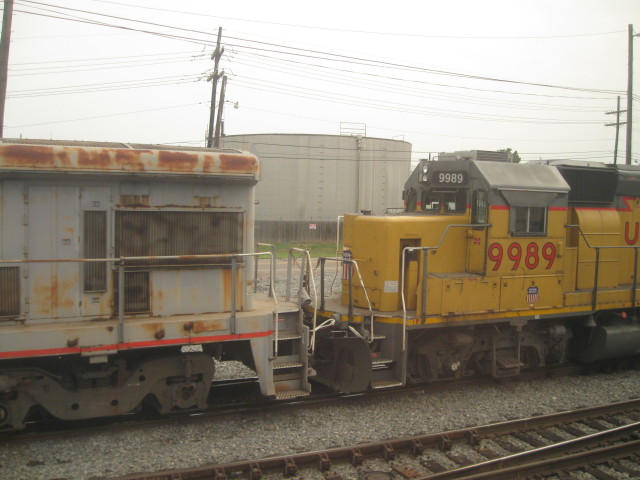
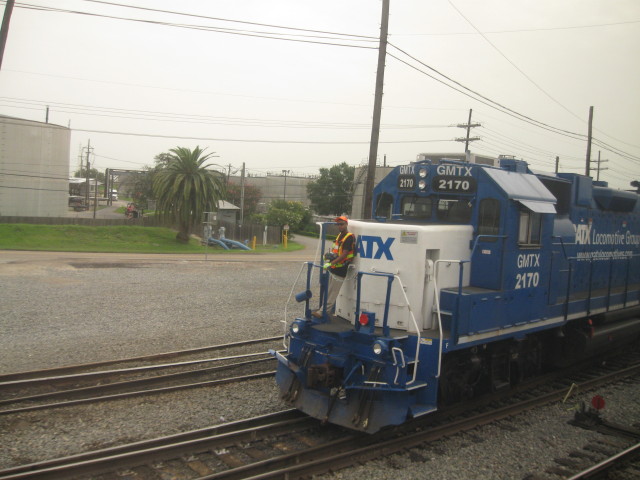
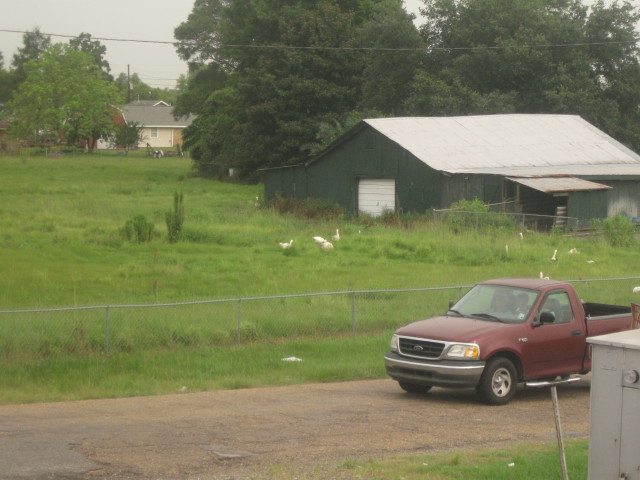
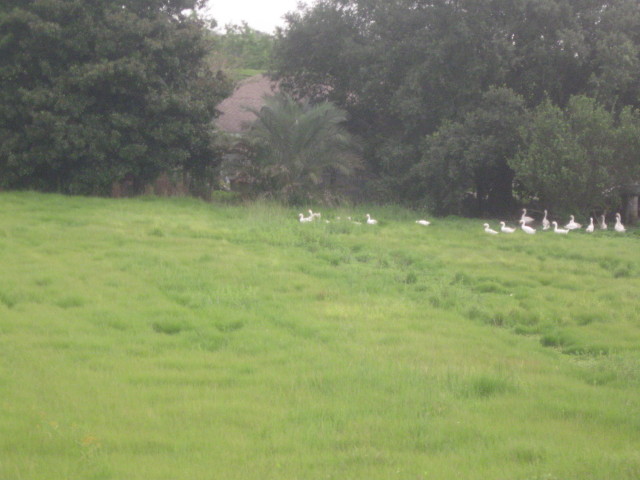

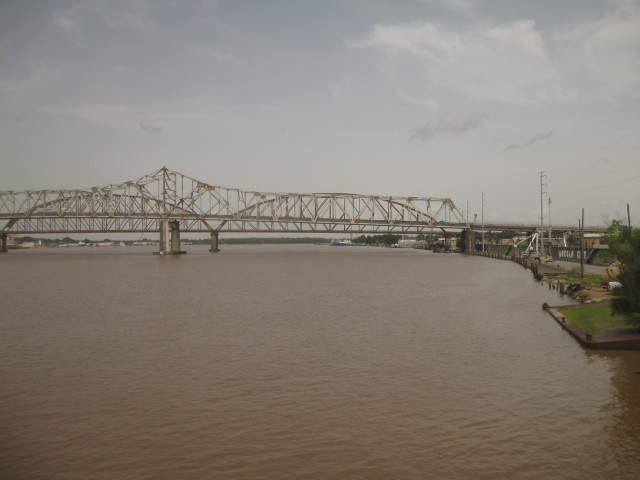
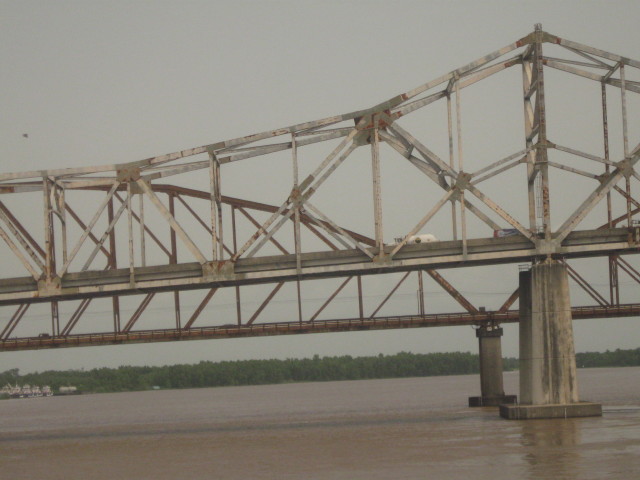
Near Morgan City.
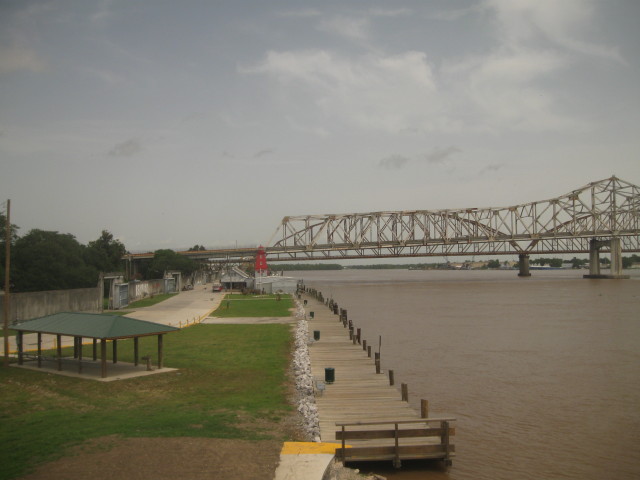
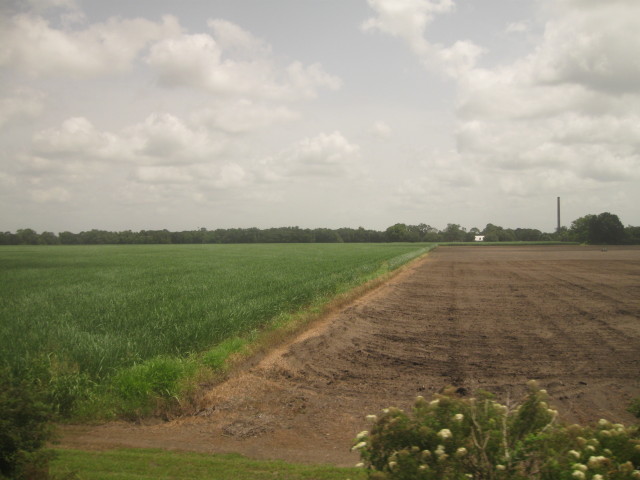
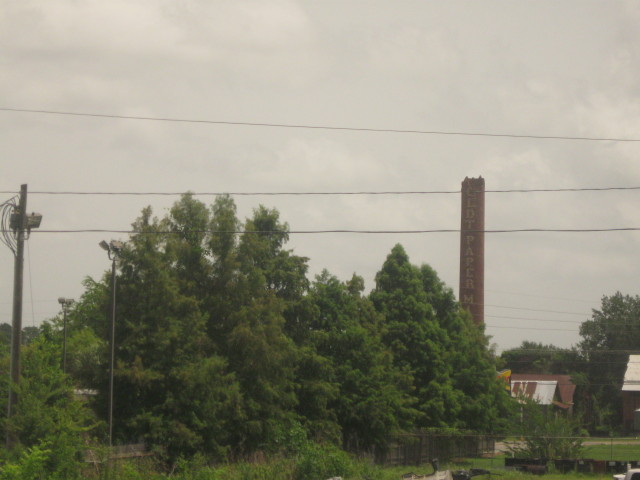
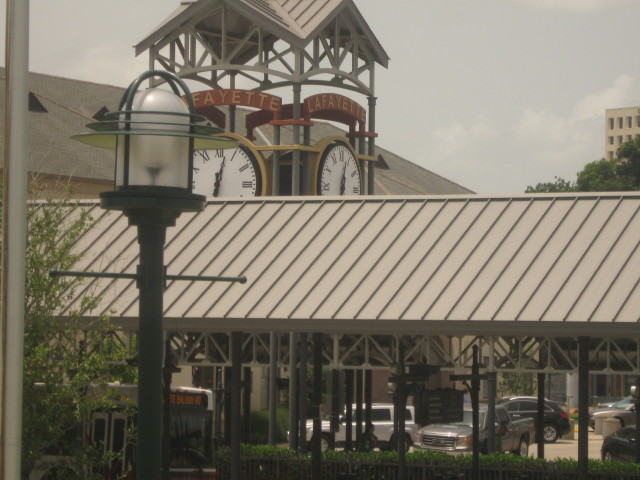
Lafayette is situated at the
center of Louisiana's "Acadiana" region consisting of low,
gentle hills in the northern section, marshes and bayous in the
south, stretching from just west of New Orleans to the Texas
border and to about 100 miles inland. It is primarily populated
by "francophones" - in this case, descendants of French Cajuns
exiled from Canada's Maritime Provinces, particularly Nova
Scotia. This is land filled with fields of rice and
sugarcane.The Festivals Acadiens et Creoles keeps
the Cajun culture alive with bayou food, music and culture. The
city takes its name from General Gilbert du Motier, marquis de
Lafayette, a French military officer who served in the
Continental Army under George Washington. Due to the Cajun
culture's affinity for good food, it has one of the highest
numbers of restaurants per capita of any U.S. city.
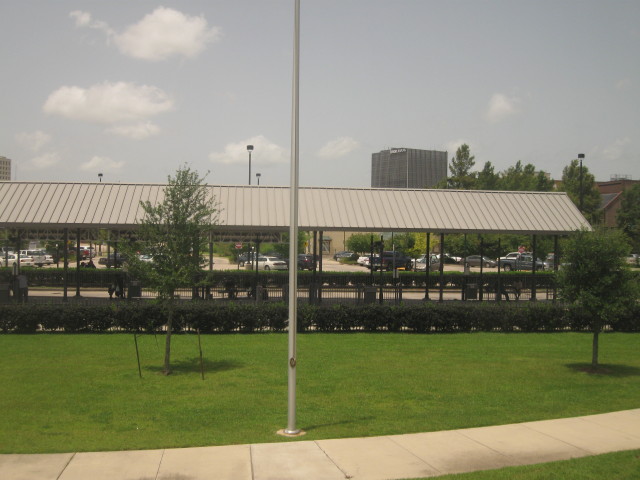
Had the hamburger lunch in the diner at Lafayette, LA
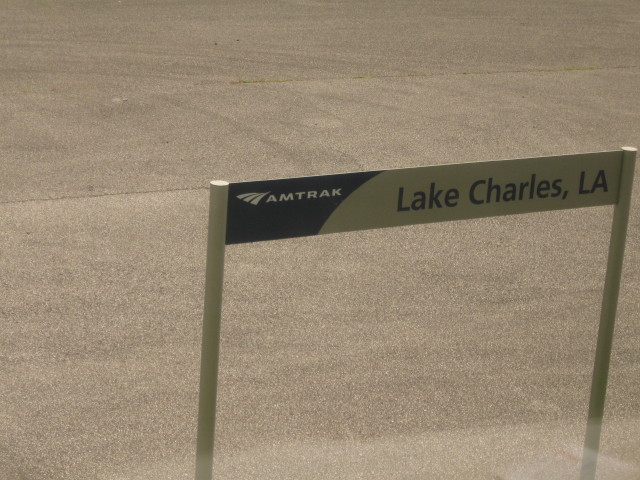
Lake Charles is a major
petrochemical refining and recreational gaming center. With more
than 75 festivals held annually, it is referred to as the
Festival Capital of Louisiana. Just east of downtown, its Charpentier
District - French for carpenter- features numerous large 1890s
Victorian houses utilizing pine from the city's mills. Trunkline
LNG (Liquefied Natural Gas) here is one of the few such
terminals in the U.S. Dr. Michael DeBakey, the first heart
surgeon to implant an artificial heart successfully in 1963, was
born in Lake Charles, as was singer-songwriter Lucinda Williams.
Cages submerged in the rice paddies provide evidence of the
125,000 acres devoted to craw-fish framing in Louisiana - the
most in the nation.
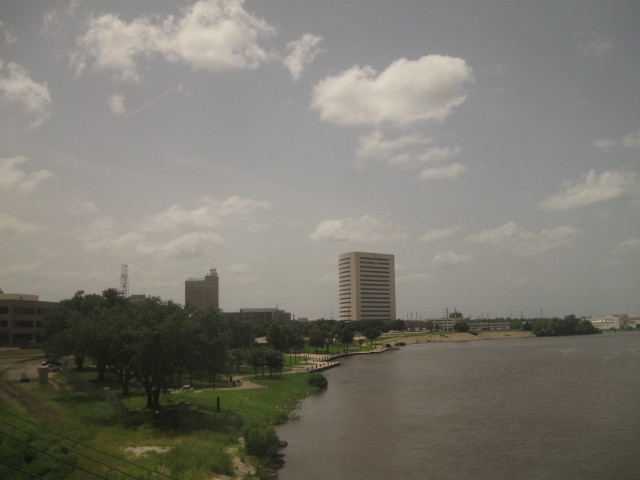
Orange is the easternmost
city in Texas, located on the Sabine River at the Louisiana
border, and is a deep-water port to the Gulf of Medici. The
chemical industry paces area revenue.
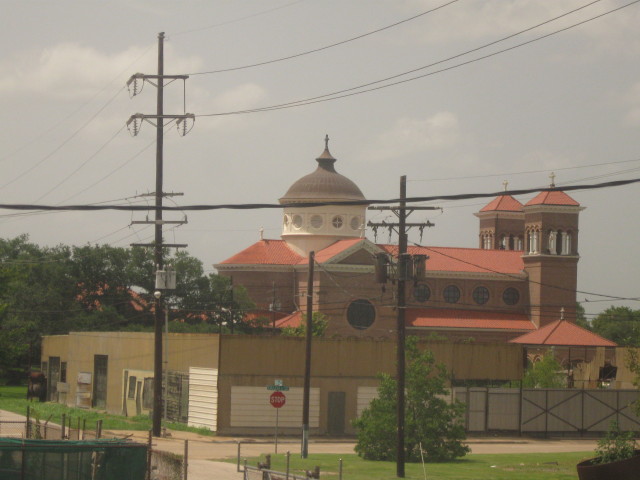
The First Presbyterian Church, completed in 1912, was the first
building to be air conditioned west of the Mississippi River, and
has the only opalescent glass dome in the U.S.
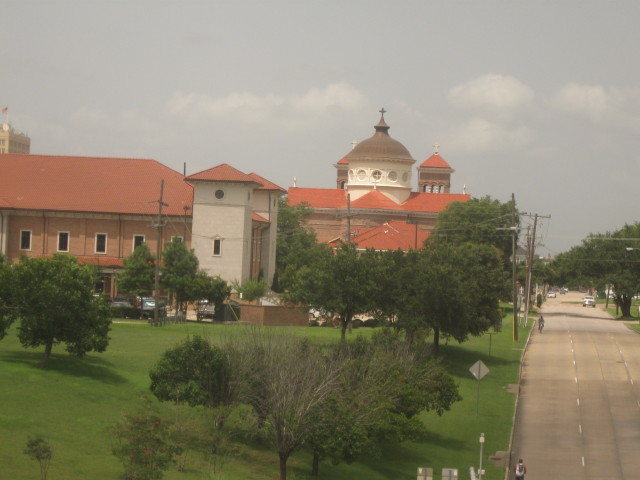
Exit 880 on Interstate highway 10 here is the highest numbered
exit mile marker on any freeway or Interstate in North America.
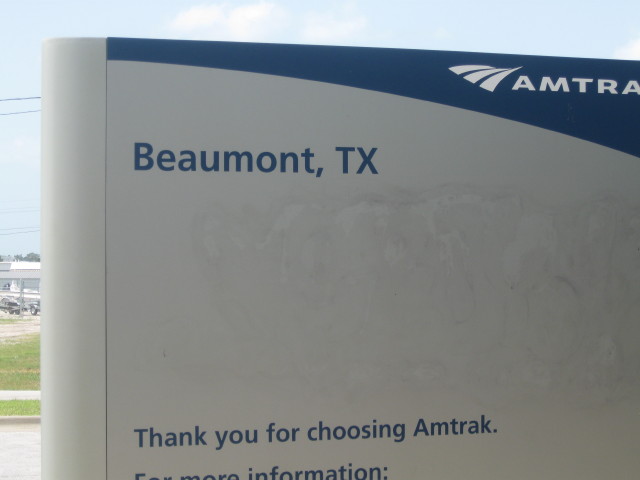
Our first fresh air break was there in Beaumont and it was hot and
breezy. It is also a crew change station. I got off the train,
took a few snaps and decided my air-condition room was a better
bet.
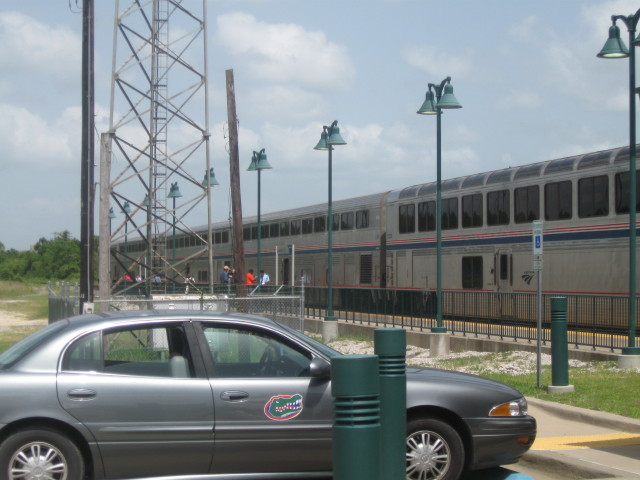
Beaumont, along with Port
Arthur and Orange, forms the Golden Triangle, a major industrial
area on the Texas Gulf Coast. Beaumont was a cattle-raising,
farming, rice-milling and lumber center during the 19th century.
Oil was discovered at nearby Spindletop in 1901, the first major
oil field and one of the largest in U.S. history. Chevron,
Humble Oil and Exxon-Mobil were founded in Beaumont. Its port
consistently ranks among the top five in the U.S. for tonnage.
Among its many cultural attractions is the Fire Museum of Texas
featuring antique fire trucks, equipment and one of the world's
largest hydrants.
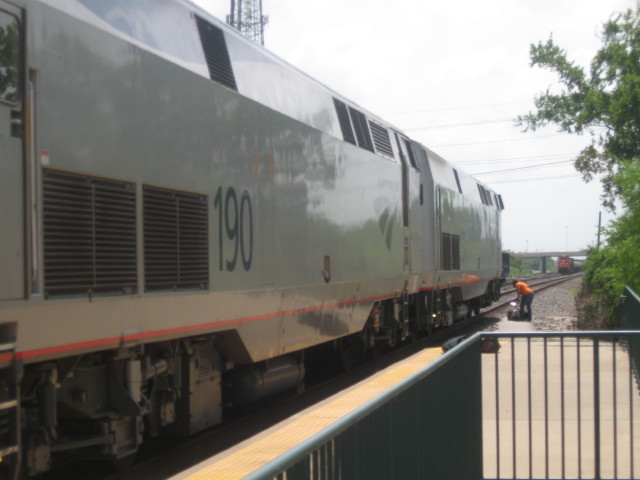
Person in orange shirt was our female engineer who took us from
NOL to Beaumont.
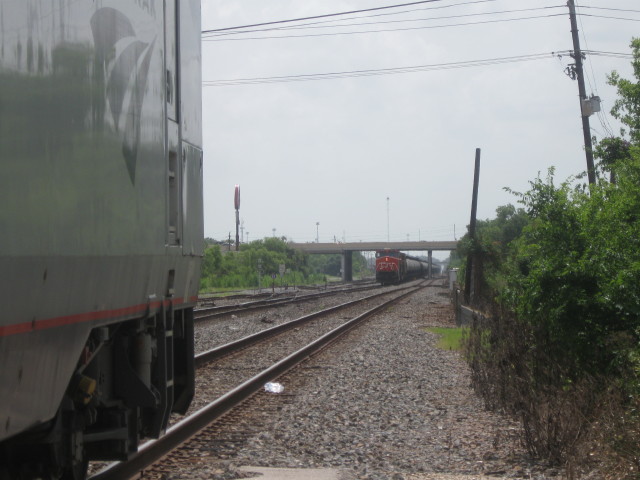
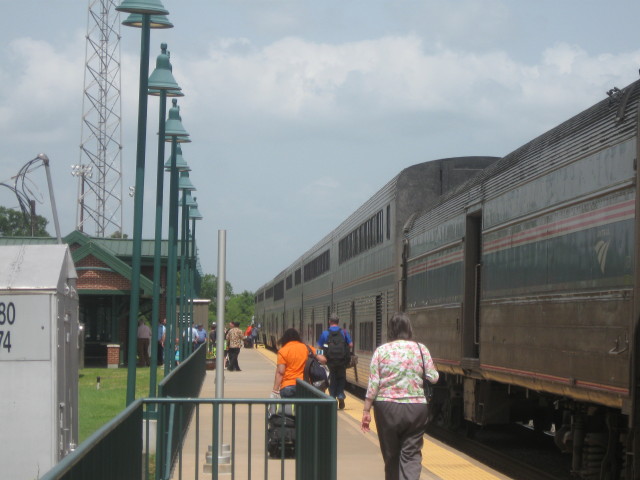

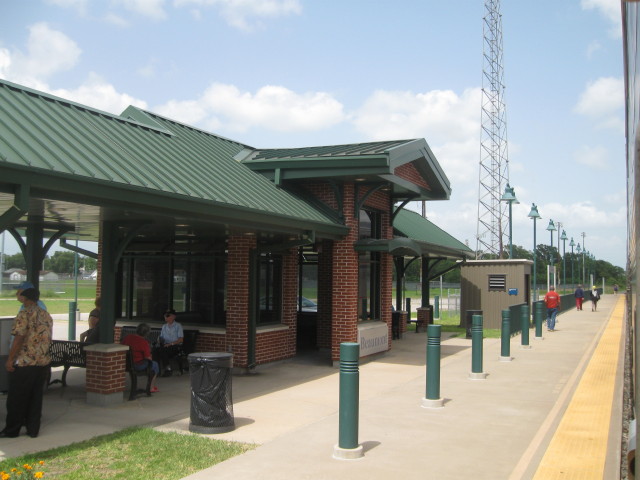
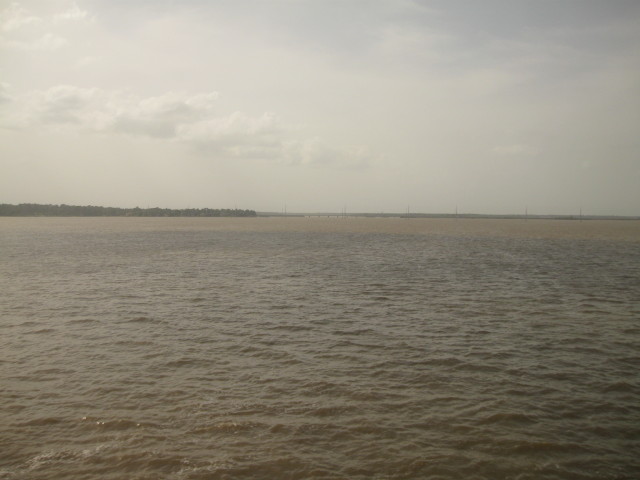
Lake Houston.
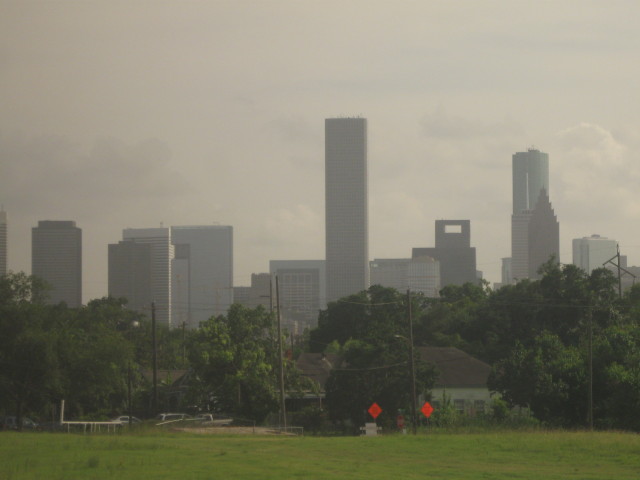
Houston is the fourth largest city in the U.S. and the largest in
Texas. Its skyline is the third tallest in the U.S. Founded in
1836, it was named after General Sam Houston, then president of
the Republic of Texas, who commanded at the Battle of San Jacinto
to win independence from Mexico.
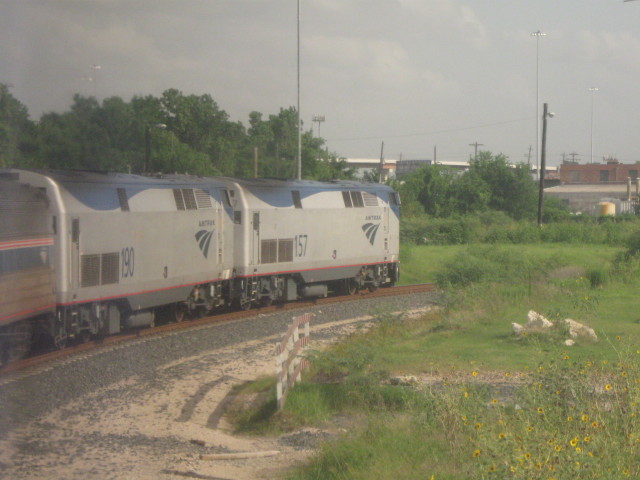

We departed Houston on schedule at 6:55pm and about 8:00pm we were
pulling into a siding near Rosenberg. The circus train was
approaching us so we needed to pull over and let it pass. The
animals have the right-away and the engineer had the pedal to the
metal.
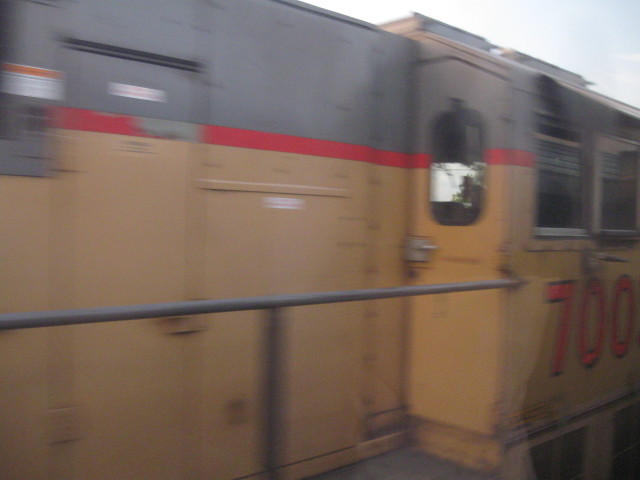
Circus train loco.
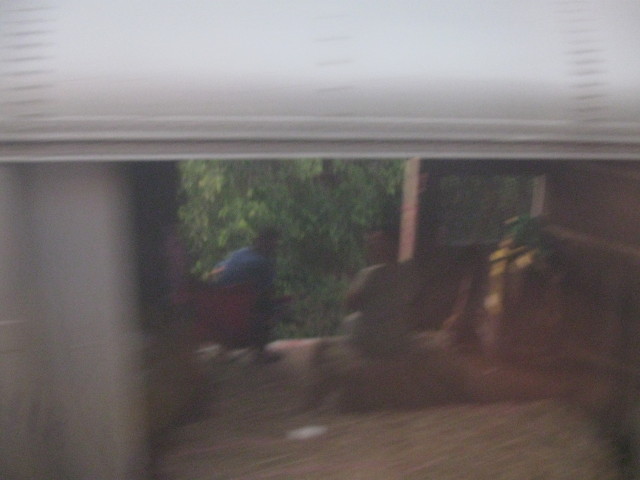
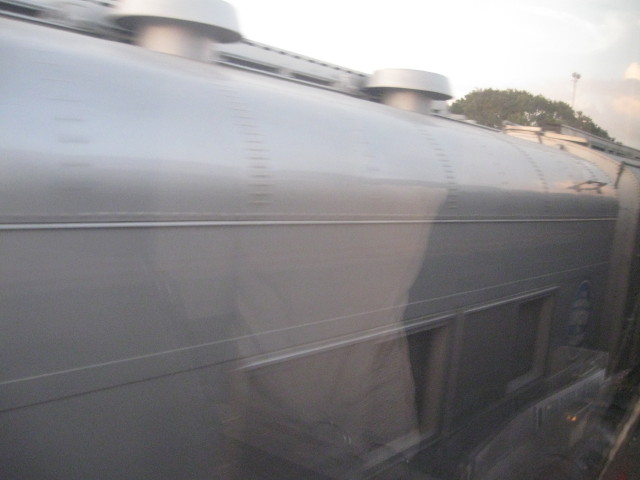
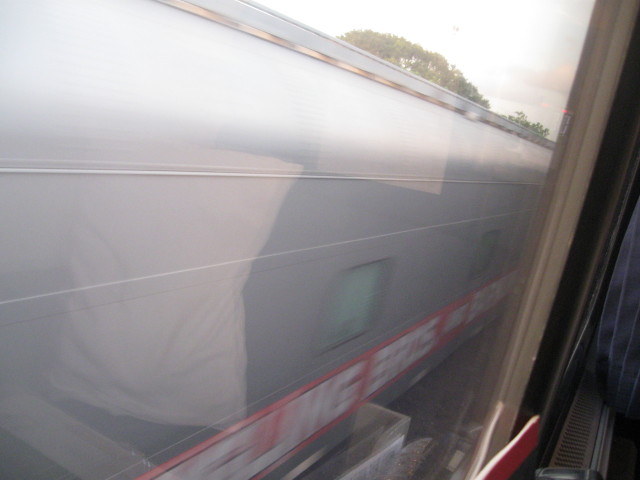
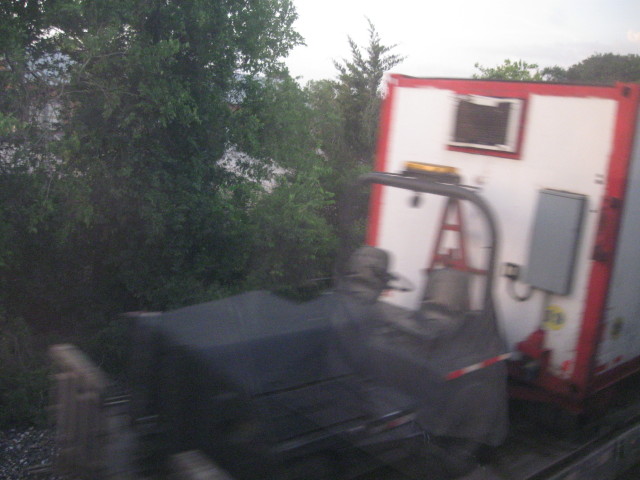
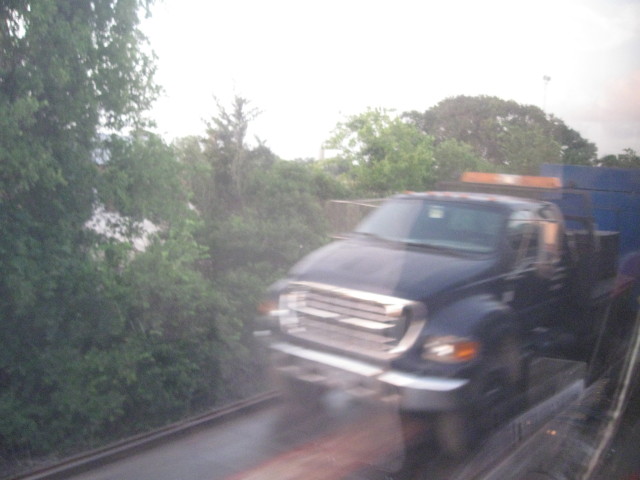
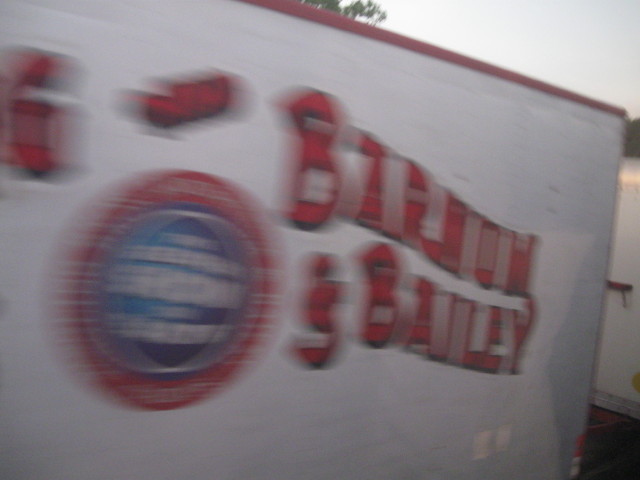
The Blue circus train. The other is the Red train.
It took about 4 minutes for this fast moving train to pass by.
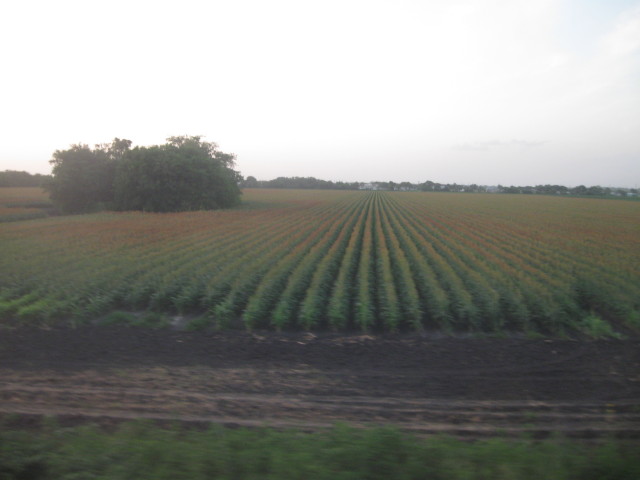
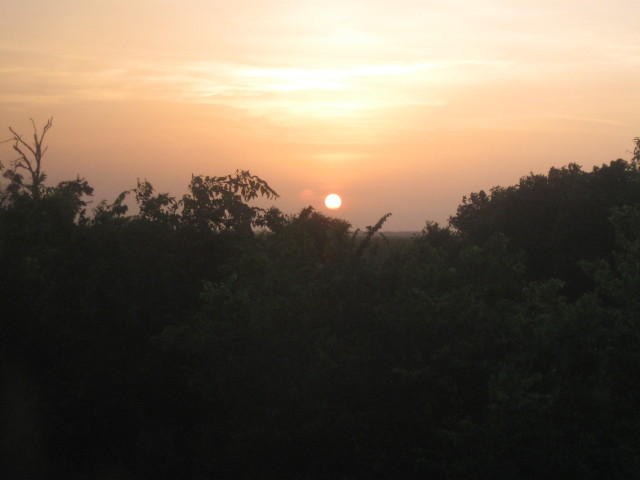
Sunset on the
Sunset Limited in Texas.
After the circus pass by, we
pulled out of the siding and on to the main track. Then it was
time to go to the diner for a good steak dinner. Returning from
the Dining car, my car attendant, Yvone, a real sweetheart
and very helpful, inquired if I was ready to have my bed made
up. Replying in the affirmative I then stepped into the hallway.
Yvone had to lower the upper bunk to retrieve the night bedding.
She didn't get far as the wall was pinching the bunk preventing
the bunk dropping down.With the bed stuck, she said that she
would be right back, then returned with a heavy duty crowbar.
Utilizing the crowbar like a journeymen iron worker, the wall
gave way and let the bunk drop. We both had a laugh about the
event. With the bed made for night use, I retired and with the
landscapes passing by, drifted off to sleep.
Later I was awakened when I noticed the train
was at rest. I sat up and looked out the window and found the
San Antonio station just steps away. Curious, I dressed and went
outside to be soaked up in the enrapture. San Antonio is the
cultural and geographic gateway to the Southwest. It is best
known for its River Walk, the Tejano culture and the Alamo.The
Battle of the Alamo in 1836 pitted 189 defenders against the
4,000-man army of Mexican General Santa Anna for 13 days; their
deaths led to the battle cry "Remember the Alamo" as a rallying
point in the Texas Revolution. The building is a former Catholic
mission maintained as a shrine in the heart of the historic
downtown district. The Sunset Limited scheduled stop
here for the west bound # 1 is with arrival at 12:05am and
departure at 2:45am. As this is a major servicing stop, the long
layover gives passengers time to visit the Alamo. The hike to
the Alamo is about a mile for the adventurist. As I saw the
Alamo when I had basic training here in 1964 and walking around
the city in the middle of the night was not high on my list, I
decided to hang around my car and view the surrounding
activities. The Amtrak mechanics with their powerful bright
flashlights were climbing under and around checking everything
and anything. It had been 573 miles since we left New Orleans
and it was good to see everything was still ship-shape. I walked
over to the not-so-large station, went inside and looked around.
It was crowded with most seats occupied, as were the outside
areas. Shortly I was thinking being back in bed seem so good
that I returned to my room 06 in car 0130 and was fast asleep
when the Sunset Limited restarted its westward journey
to the wilds of West Texas.